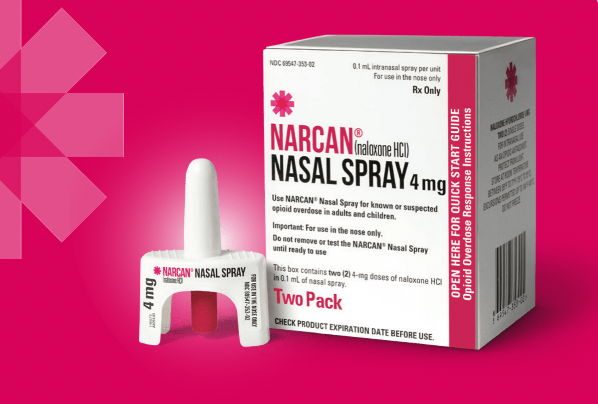At a recent forum, Sheriff Don Barnes shared that the synthetic opioid known as fentanyl is now the No. 1 cause of death among youth in Orange County. Yet there is a prescription drug that’s been proven to reverse the effects of a fentanyl overdose or poisoning within minutes.

Naloxone has been promoted by federal, state and local public health authorities as safe, effective, easy to carry, and potentially life-saving. The California Department of Public Health has even issued guidance for schools and districts interested in developing their own policies and receiving free naloxone.
But parents and community members may still have questions about the medication’s usage. To help provide answers, the OCDE Newsroom has compiled facts from the Orange County Health Care Agency, the California Department of Public Health, the U.S. Centers for Disease Control and Prevention, and other experts.
What is naloxone?
Naloxone is a lifesaving medication that works to reverse the effects of overdoses related to fentanyl, heroin and prescription opioid use.
According to the CDC, fentanyl is 50 times stronger than heroin and 100 times stronger than morphine. As a result, just two milligrams can be a deadly dose, and many of fentanyl’s victims don’t even know they’re taking the drug.
One 4-milligram dose of naloxone in the form of Narcan nasal spray can reverse an overdose by blocking opiate receptors in the nervous system. Each Narcan box contains one dose and cannot be reused. Naloxone also comes in the form of an injection that’s inserted into the outer thigh.
Should I carry naloxone?
If someone you know has an increased risk for opioid overdose or poisoning, the CDPH advises carrying naloxone. Health officials note that it cannot be self-administered.
Fentanyl-related overdose deaths increased by 625 percent from 2018 to 2020 among California’s youth ages 10 to 19, according to state health officials. Considering the risk, knowing how and when to use naloxone can save the life of children or teenagers experiencing serious symptoms.
The effects of the nasal spray are almost immediate and can restore someone’s breathing in two to three minutes. That means bystanders can prevent overdose deaths. And studies indicate that in more than a third of opioid-related overdoses, there were others nearby who could help.
Any person of any age can carry and administer naloxone. However, minors who distribute it should be aware of the necessary steps to recognize an overdose and be equipped to use the Narcan nasal spray and follow proper procedures in case of a medical emergency.
Based on the increasing threat of fentanyl misuse, County Health Officer Dr. Regina Chinsio-Kwong has urged everyone in the community to learn about naloxone and spread awareness.
Where can I receive naloxone?
In 2017, the CDPH issued a statewide standing order for naloxone, enabling community organizations and other entities not currently working with a physician to distribute the medication to those at risk for a potential opioid-related overdose. The order also allows individuals to administer naloxone during a life-threatening emergency.
Organizations that are pre-qualified to receive naloxone through the standing order are first responders, law enforcement agencies, courts, jails, fire departments, colleges, schools, churches and religious entities, as well as veteran shelters, homeless organizations and other groups.
Families who are interested can pick up Narcan nasal spray from a pharmacy or a local organization with a naloxone distribution program.
When and how do I administer naloxone?
Before giving naloxone to someone who may be experiencing the effects of opioids, call 911 immediately. Then check for these signs to determine if they are having an overdose: constricted pupils, losing consciousness, slow or weak breathing, limp body, choking or gurgling sounds, and cold, clammy or discolored skin.
To use the medication, follow these instructions from the CDC:
- Remove the nasal spray from the packaging and hold the spray plunger with your thumb.
- Tilt the person’s head back, and insert the tip of the spray in either nostril until your finger is touching their nose.
- Firmly press the plunger to release the entire dose.
- Wait two to three minutes for the person to respond.
After the medication is given, try to keep the person awake and breathing until emergency medical assistance arrives. Laying them on their side to prevent choking and any further injury will also help.
The CDPH offers more detailed instructions on using naloxone in the following video:
Can naloxone harm someone who isn’t experiencing an overdose?
For those who are not experiencing an opioid overdose but presenting similar symptoms, the CDC says issuing the medication will cause no harm. In fact, naloxone can be given safely to people of all ages, from infants to older adults.
California’s Good Samaritan Law offers protections to those administering naloxone at the scene of a medical emergency by not holding them liable for civil damages. Individuals and licensed health care providers who administer or prescribe the drug are also protected from any civil or criminal liability by the Drug Overdose Treatment Liability Law.
Experts say more than one dose of Narcan may have to be administered when stronger opioids like fentanyl have been ingested. If the person is not responding, the CDC suggests using additional doses until help arrives.
Where can I get more information about naloxone?
To learn more, visit these sources:
